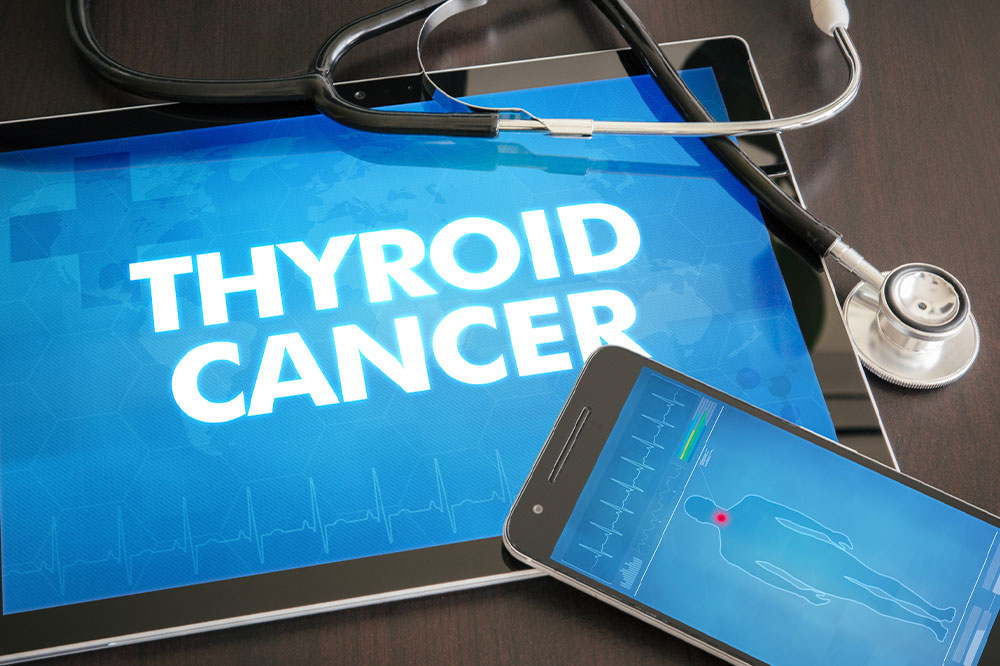
Thyroid cancer – Symptoms, types, and management options
Thyroid cancer affects the thyroid gland in the endocrine system, which is a part of the body that helps in regulating functions like metabolism, heart rate, and even body temperature. When detected early, the cancer is known to be highly curable, so it is important to learn about and recognize the early signs to get a prompt diagnosis and treatment. Here are a few key facts one should know about thyroid cancer:
Signs and symptoms
One of the first signs of thyroid cancer is feeling a lump or a growth in the neck, which is called a thyroid nodule. These nodules are rarely malignant, so one should not jump to conclusions. However, one should consult a doctor and get tested to get a precise diagnosis and treatment plan. According to studies, only 3 out of 20 nodules turn out to be cancerous; however, one should never delay a diagnosis. Other signs one can observe are:
Difficulty in swallowing or breathing
Swollen lymph nodes in the neck
Frequently experiencing loss of voice and hoarseness
If cancer has metastasized, one may experience symptoms like feeling tired, nausea, vomiting, and loss of appetite.
Causes
It is not yet known why certain cells transform into malignant cancerous cells and attack the healthy ones in the thyroid gland, however, there are certain factors that put some people at a higher risk of developing this condition. Key risk factors could be genes, low iodine levels, and exposure to high levels of radiation. Here are some other risk factors:
An enlarged thyroid gland or goiter
High body mass index
Family history of thyroid cancer or other thyroid diseases
Signs of thyroiditis like inflamed thyroid gland
Gene mutations that cause endocrine diseases
Radiation therapy for treating neck or head cancer during one’s childhood
Exposure to radiation from nuclear weapons or a power plant
Types of thyroid cancer
Papillary: This is the most common yet highly treatable type of thyroid cancer. Papillary thyroid cancer grows gradually and spreads to the lymph nodes in the neck.
Follicular: This type accounts for about 15% of thyroid cancer cases and often spreads to the bones and organs like the lungs. It is important to detect and treat follicular cancer early on as managing its spread can get challenging later on.
Medullary: A rare type of thyroid cancer, medullary thyroid cancer usually develops in those who have a family history or a gene mutation that contributes to an increased risk of the disease. This type accounts for only 2% of all thyroid cancer cases.
Anaplastic: The fourth type of thyroid cancer is difficult to treat as it rapidly spreads to other organs. Anaplastic is also a rare type of cancer.
Diagnosis and treatment
Doctors recommend various tests like thyroid blood tests, biopsy, radioiodine scans, and imaging scans that can help diagnose thyroid cancer and determine the spread of cancerous cells. Based on the diagnosis, health professionals prescribe specific treatment and management methods. Some of the common treatment options are:
Radiation therapy: Strong beams of energy are directed at the tumor to kill the cancer cells and stop them from growing. Internal radiation is also used, in which radioactive seeds are placed in and around the tumor.
Radioiodine therapy: Here, the patient is given a radioactive iodine solution which helps shrink and destroy the cancer cells in the thyroid gland. Radioiodine therapy is a relatively safe treatment method as it ensures that the body, apart from the thyroid gland, gets minimal radiation.
Hormone therapy: This treatment method focuses on blocking the release of hormones that can cause cancer to spread or grow back.
Chemotherapy: Although not the most common treatment method for thyroid cancer patients, chemotherapy uses intravenous intervention to stop the cancer cells from growing.
Surgery: This is a safe and most common treatment method for thyroid cancer. Depending on the diagnosis, the surgeon may opt for a lobectomy, which involves removing a part of the thyroid gland, or thyroidectomy, which includes removing the whole thyroid gland. They may also remove lymph nodes nearby that may have been exposed to the cancer cells to ensure the tumor does not grow again.




